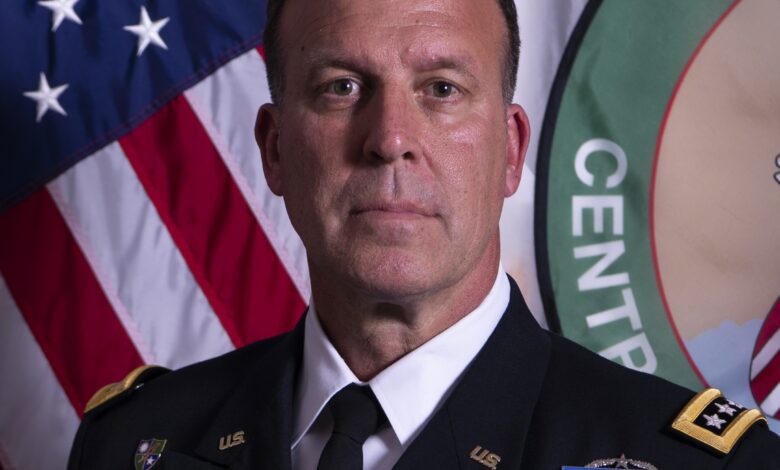
The head of the US Central Command General Michael E. Kurilla revealed to Al-Masry Al-Youm that the unmanned naval force to be deployed in the waters of the Arabian Gulf this year, will serve as “scout teams” for US forces in the region.
The US Central Command (Centcom) had announced earlier the establishment of an unmanned naval force above and below the waters of the Gulf under the name of Task Force-59, which was launched in September 2021 in Bahrain, the headquarters of the US Fifth Fleet.
The project aims to integrate Unmanned Systems and Artificial Intelligence into Middle East Operations after a series of drone attacks against some ships which Iran has been blamed for.
Over the past year, Task Force-59 has operated uncrewed surface vessels in Gulf waters for more than 25,000 hours.
In response to a question by Al-Masry Al-Youm about the nature of this unmanned force, General Kurilla, from the headquarters of the US Central Command in Florida, explained that the US Central Command recently formed three task forces to engage in confronting maritime threats in the Gulf.
One of these teams, Task Force-59, consists of 100 units deployed in 2023 above and below the waters of the Arabian Gulf.
These uninhabited units carry sensors that collect vast amounts of data, he explained, adding that “It will allow us to deploy these units. As a result, uninhabited areas have a better view of the international waterways important to the region and the world.”
General Kurilla added that deploying the unmanned fleet will enable the US to use its operated systems more efficiently and strategically, as these units are scheduled to collect data through sensors.
“This data is extracted and analyzed through artificial intelligence platforms. So, in the end, a much clearer picture of the operating environment in the Gulf will be formed, as well as it will enable us to use our manned platforms,” he said, adding that “Such units will serve as advanced scouting teams for our manned assets.”
When asked about the countries participating in the unmanned naval force, General Kurilla explained that the US aims to have 80 percent of these forces consisting of 100 unmanned units from allies and partners in the region, while the US holds the remaining 20 percent of the naval force size, provided it is deployed the following year.
He noted that Washington is cooperating with almost all countries in the region regarding these uninhabited naval forces.
General Kurilla assured that each marine unit is equipped with different sensors so that monitor movement above and below the surface of the sea to identify natural and abnormal ships of interest, while the marine fleet is tasked with monitoring the activity of thousands of ships that pass through the corridors.
When these unmanned drones detect an abnormal pattern or something that seems unusual, such as a ship traveling on an unconventional path or a way associated with illegal activity, that data is transmitted to the operations center, and staff at the operations center can direct manned systems to take appropriate action.
General Kruilla had recently said in a press statement that the fleet operating in the strategic waters of the Arabian Gulf is in cooperation with Washington’s international and regional partners.
He noted an operations center for Task Force-59 has been established in Bahrain, as well as another center in Aqaba, Jordan. Last month, a naval exercise was also organized in the Gulf, in which the Kingdom of Bahrain participated, in which seven human-crewed ships from Saudi Arabia, Bahrain, the UK, and the US teamed up with unmanned systems.
In this recent telephonic press briefing, General Kurilla indicated that Task Force-59 had finished the Digital Horizon program, which experimented with emerging unmanned ships in the Arabian Gulf linked to artificial intelligence platforms.
In addition, the leaders of the task forces evaluated the set of platforms that provide the most significant amount of awareness of the maritime field, which is now ready for operational deployment.
The US Central Command supervises military operations in the Middle East region, across more than four million square miles.
The scope of competence of the US Central Command includes the most critical geographical region in the world, which intersects three continents, in addition to the most vital global commercial sea lanes, flight corridors, pipelines, and land routes.
It covers 20 countries from northeastern Africa through the Middle East to Central and South Asia.




